Hej! Flow from the Road
Unpacking The DevOps Conference in Copenhagen and Stockholm
I had a lucky break this week to have both Helen Beal and Simon Wardley in the same room to discuss maps and mapping, capabilities and value streams, structure and dynamics. I’ve met new friends and learned how some key supports are making a difference in IKEA and elsewhere.
It’s been a great few days, and I think we made some good progress bridging the worlds of value chains and value streams - more about that in the next newsletter when I compile some illustrations!
First off, I was invited by Ralf Schou-Jensen, Development Director (SVP), Wealth Technology Nykredit to present on Flow Engineering to their internal tech meetup, along with Rasmus Lystrøm from Microsoft (with stern warnings about half-baked enterprise acceleration efforts). I'm not always on top of mapping my network to my travels so if you see me coming into town please do reach out! I love connecting in real life and seeing the real cultures and challenges of different organizations. Ralf has been a pioneer in reorganizing into value streams and he’s been very generous sharing his learning. I hope to work together and share that with you all very soon!
Both events had many local companies represented, from every industry vertical, and all levels of leadership.
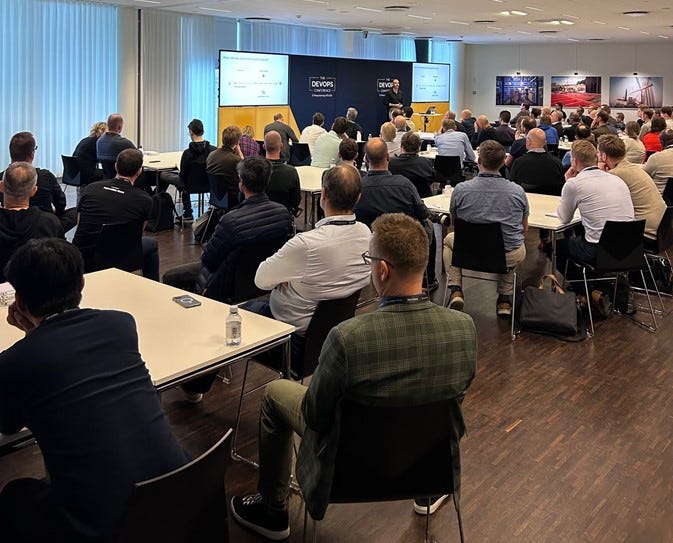
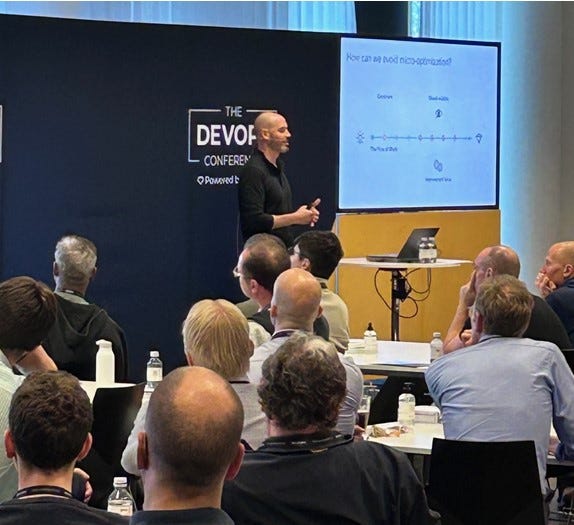
Mapping Conversations
I learned something fun first hand: It’s not likely you have a conversation with Simon Wardley without creating a map:
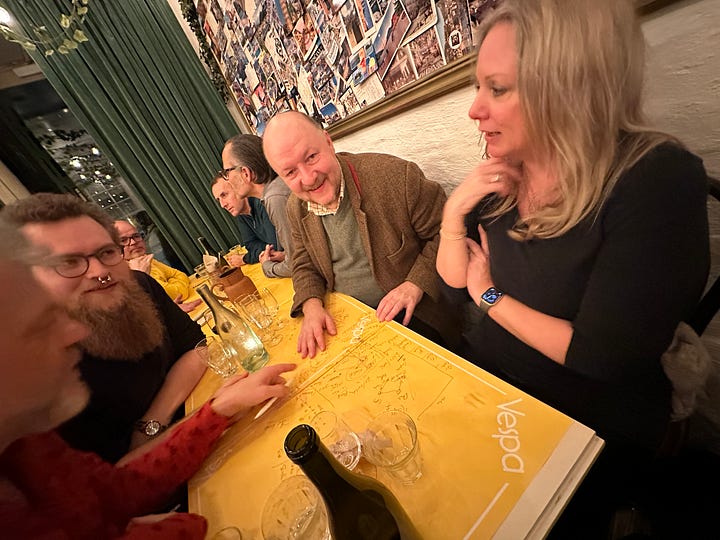
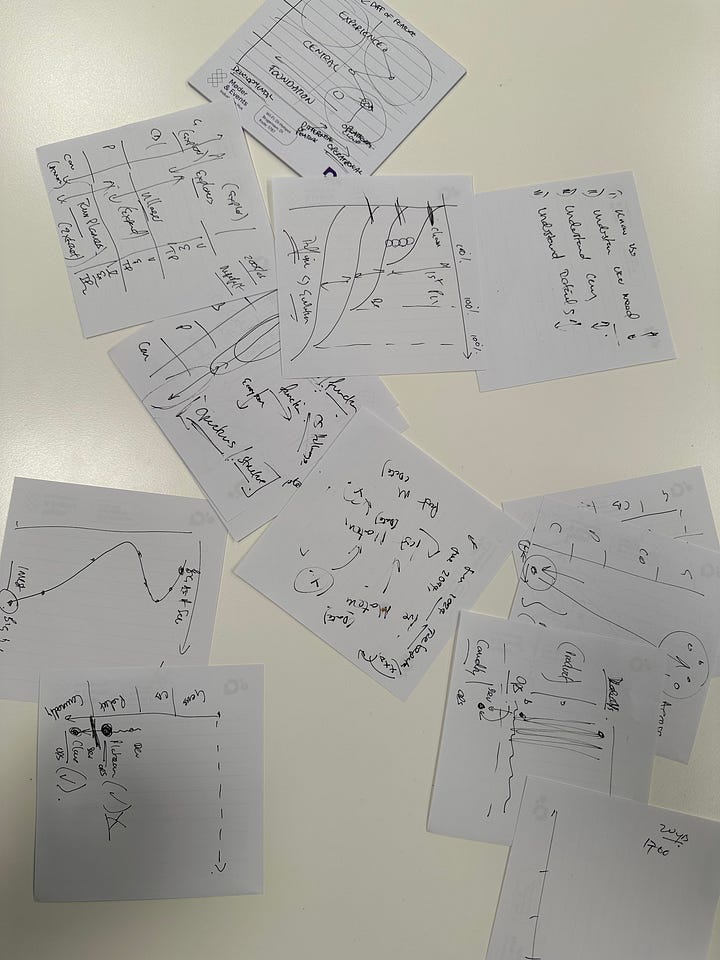
Talking with Simon was a great reminder of the value of mapping more so than the map, and a few key points to keep in mind:
The point of a map is navigation. It enables mappers and viewers to make decisions about where to go (where to invest, where to focus)
The map is not the territory, but the landscape (territory + characteristics) is the most critical part. The landscape is the collection of all the factors that assist with navigation (knowing where the cliffs are, where the rivers lie, the landmarks etc), and allows you to play out different scenarios
Without a sense of the landscape, the map is just a chart of specific data, and you may find it overly constrained and less useful as a reference
In a value stream context, this means that basic mapping is helpful, but the reason we invest in more detail at the constraint is because we have many options and compromises available, we have to navigate, and so we need to know the characteristics of the landscape (roles, tooling, inputs, outputs, obstacles, context, etc) in order to navigate effectively. By doing this together, we can teach navigation skills to those who are less experienced, and test our assumptions.
I don’t think it’s valuable to get caught up in maps vs charts, but it’s important to consider that maps aim to capture a representation of reality, rather than an illustration of a specific point or a case. With mapping, we want to describe reality, so that we can talk about it effectively and make better decisions, we don’t just want to make a case or prove a point.
IKEA’s Tools of Transformation
A big bonus was a quick tour of two mechanisms IKEA has been using to boost performance.
Allen (as in Allen wrench) is their developer portal based on Backstage, open and inner sourced, and comprised of 30 sub-platforms.
Skapa (Create in Swedish) is their design system, comprising components, icons, styles, language, guidelines, and tools.
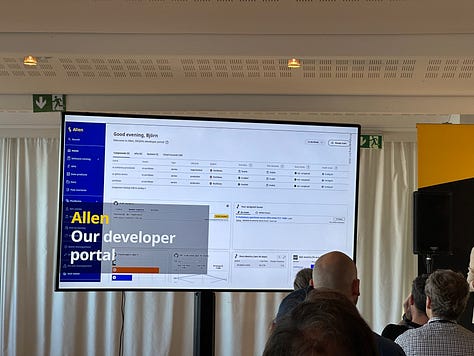
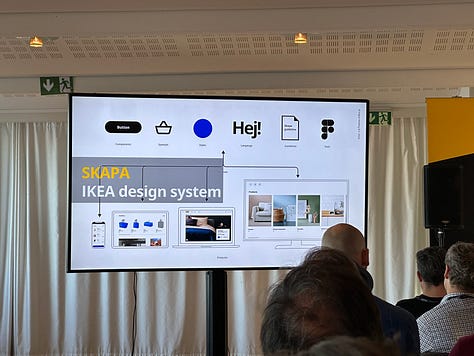
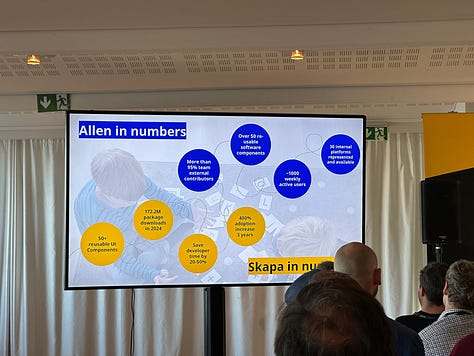
Very cool to see the savings from a design system quantified. It’s a pattern I’m a big fan of, but rarely gets a lot of attention.
Not new, not unique, but great to see highlighted and described in their context.
Home work
After this sprint I hope to be home for a while to work through some new ideas and finish up production of the Flow Engineering Immersion course, which we hope makes it out in the spring!
In other news: The latest iteration of ‘Wiring for Flow’ research has been approved by IT Revolution, so John Rauser and I will be digging deeper into what we can learn and apply from planet-scale networking. I’m hoping in this round we can start moving towards connecting the mechanisms we’ve discovered to patterns of success and struggle. Stay tuned for more!
If you enjoyed this, and you think someone else may, please forward it along!






I enjoy and use Wardley Mapping; I hadn’t considered this integration with VSM. I imagine that conversation must have been a unique moment. Looking forward to seeing more content like this!